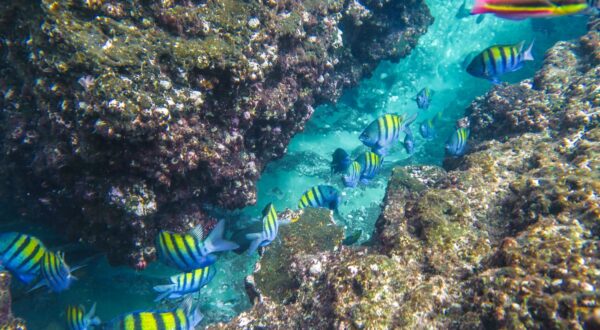[Plankt’Eco project] Developing global plankton observation to improve ocean management
Since 2017, the Tara Ocean Foundation has been developing international cooperation projects with developing countries to share the ocean observation methods that form the DNA of our scientific expeditions. Today, the Plankt'Eco project (2023-2026) addresses two key issues of this international cooperation: having tools adapted to local contexts for good resource management, and installing local observation and analysis capacities so that countries have research independence.
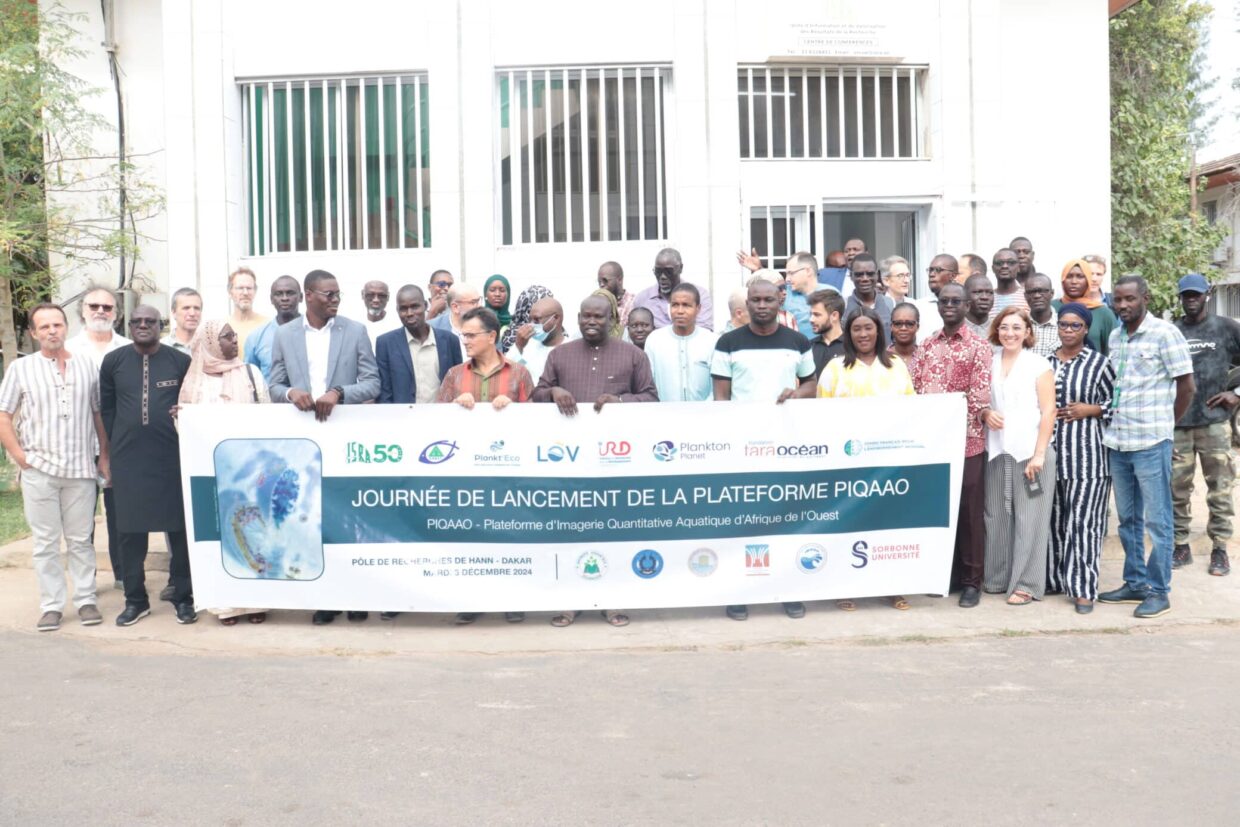
Integrating researchers from developing countries into Tara Oceans communities
In 2016, the Tara structure, formerly an endowment fund, obtained the status of a foundation recognized as being of public utility, and thus officially became the Tara Ocean Foundation. This change is structural for the Foundation: it enables us to set up our very first cooperation and development project using public subsidies.
In order to support the knowledge and conservation of natural environments on an international scale, France has set up a dedicated fund, the Fonds Français pour l’Environnement Mondial (FFEM). Created by the French government in 1994, this fund finances pilot projects in all developing countries to preserve biodiversity and combat pollution. It placed its trust in us in 2017 through an initial 4-year project entitled Ocean Plankton, Climate and Development.
The objectives of this project were twofold. Firstly, a strategy of recruiting doctoral and post-doctoral students was put in place to integrate young researchers from developing countries into the research programs of the Tara Oceans scientific consortium. A total of 7 researchers from Argentina, Brazil, Chile, Senegal and Togo were funded over 4 years. The success of this program was tangible, as evidenced by the numerous joint publications, the organization of the Argentine leg of the Mission Microbiomes in 2021 on the initiative of the project’s post-docs now posted at CONICET – the equivalent of the Argentine CNRS – but also, and above all, the continuity of some of the project’s productions towards a second project currently underway.
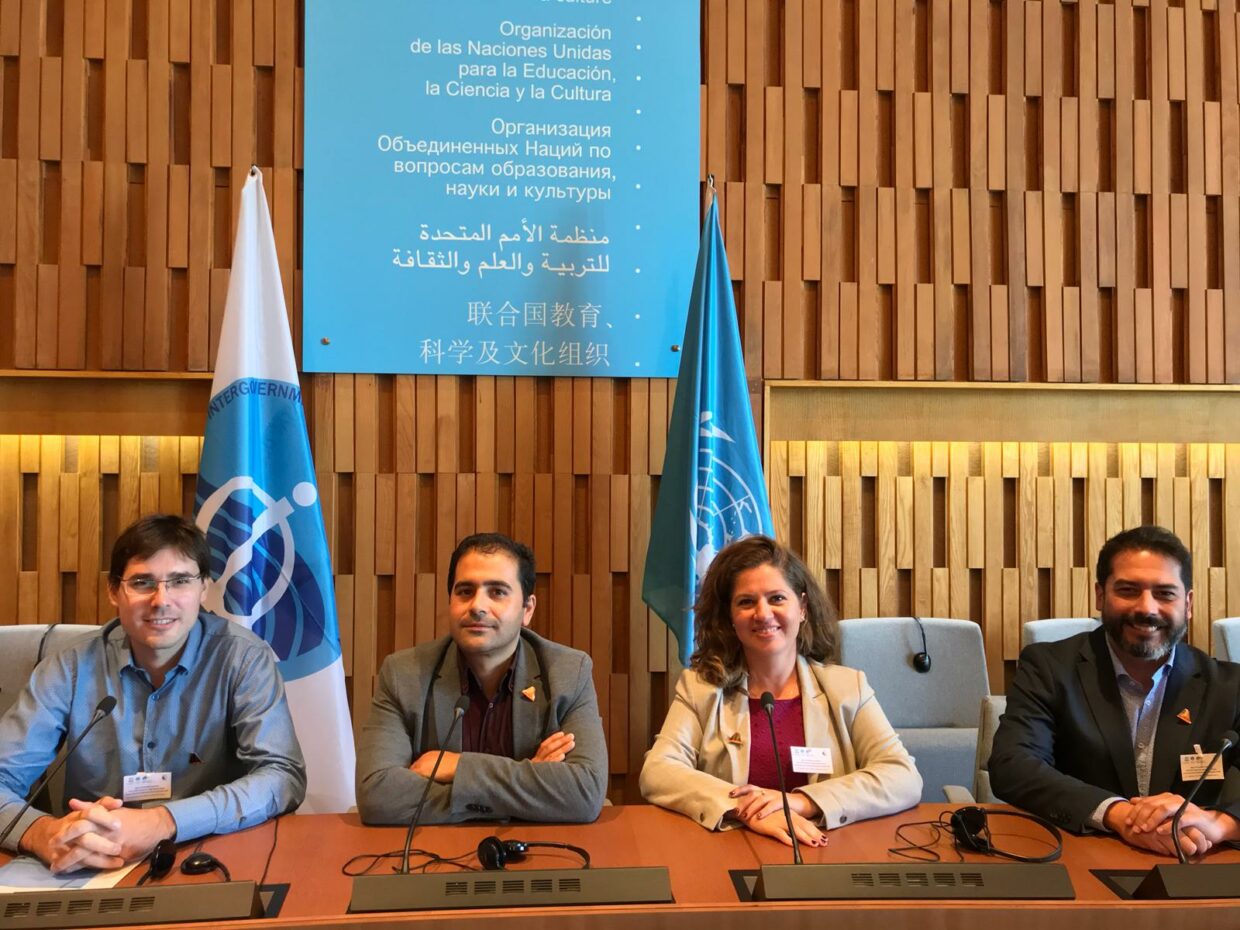
Finally, beyond the scientific objectives, the project also aimed to bring this new observation of the Ocean closer to the political spheres working towards its conservation. This involves creating new models and indicators based on the observation of plankton and its correlation with marine ecosystems. The project’s advances have also been incorporated into the ocean governance processes currently underway within the United Nations: Convention on Biological Diversity, United Nations Framework Convention on Climate Change, Law of the Sea, and the Nairobi, Nouméa and Abidjan Regional Seas Conventions.
Extended by a few years due to the Covid-19 pandemic, the project officially ended in 2022. On the strength of promising results, the Tara Océan Foundation, the French Global Environment Facility and the project’s partners have extended their collaboration in order to make further progress.
Developing global plankton monitoring
Following on from the Ocean Plankton, Climate and Development project, in early 2023 the Foundation launched its second project in partnership with the FFEM: the Plankt’Eco project. Lasting 4 years (2023-2026), the project takes the objectives of the first project to the next level by aiming to install local sampling and analysis capacity in West Africa, and to develop knowledge of planktonic ecosystems into management tools that can be used by political decision-makers and managers of natural areas.
MAPPING THE FUNCTIONS SUPPORTED BY PLANKTON
In 2015, analyses carried out on samples taken during the Tara Oceans expedition (2009-2013) led to a major publication in the journal Science: of the millions of genes identified in planktonic organisms, the researchers isolated around 50 whose expression is correlated with carbon pump activity. In other words, out of millions of genes, you only need to look for the presence of a few dozen to know whether the area is a carbon sink.
While this simplification is already bringing relatively fundamental research closer to more operational use – notably in the fight against global warming – identifying the presence of these genes requires the organization of an expedition at sea on a boat equipped with the technologies needed for genetic analysis. Nevertheless, a breakthrough is about to revolutionize the way we monitor the Ocean and its vital functions for Life on Earth.
Satellites acquire huge datasets, in real time and relatively inexpensively. Now, initial studies have validated the fact that these satellite images can be correlated with certain biological parameters in the ocean. Satellites are no longer just used to take photos or measure physical data such as ocean depths, but also to track living organisms in the ocean. This new information came to light during the first Ocean Plankton, Climate and Development project, and a concept soon emerged: if satellite images can indicate the presence or absence of certain genes known to be associated with key functions – such as the carbon pump – then it will be possible to map the functions of the Ocean in real time. This concept of mapping key ocean areas is the brainchild of partner researchers from Chile’s Center for Mathematical Modeling (CMM) and the University of Nantes, and is called KOPAs – Key Ocean Planktonic Areas.
As part of the Plankt’Eco project, the aim is now to validate this correlation between satellite images and plankton gene expression to produce a map of the key functions that planktonic ecosystems support: carbon pump, biodiversity reserve, productivity, etc. To validate this model, Chilean data from the Mission Microbiomes (2020-2022) carried out by the schooner Tara in 2021 are used. Satellite data corresponding to the exact time of sampling are retrieved, and genetic analyses of the samples are compared to determine whether areas where certain genes are expressed correspond to a specific satellite signal.
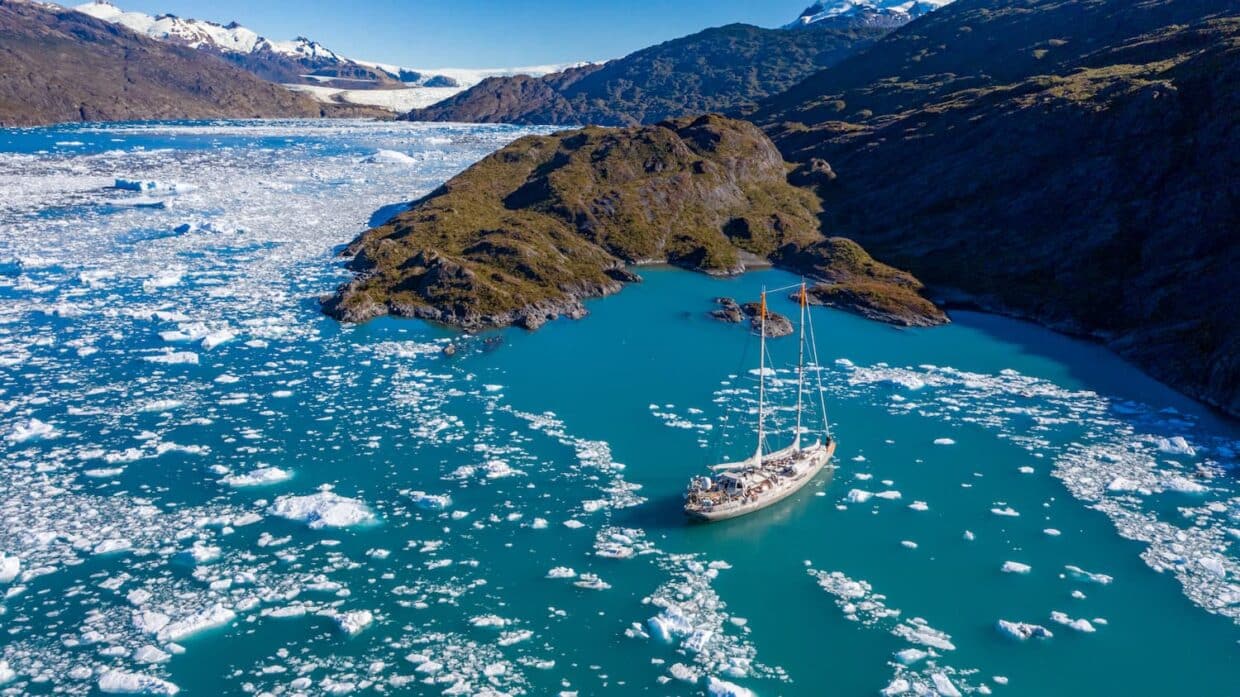
This gene-function-satellite correlation is extremely promising for an international cooperation project such as Plankt’Eco, because if it is validated in this Chilean pilot project, it means that it can be exported to other geographies without the need for an at-sea campaign. By acquiring satellite data in a given region, it will be possible to map the functions that plankton support. The prospect of Global South countries having access to plankton function mapping, normally conditional on the use of extremely expensive equipment, would be a huge step forward in the Convention on Biological Diversity’s goal of protecting 30% of marine space by 2030. The development of KOPAs mapping is also supported by the French Office for Biodiversity (OFB), which is very active in achieving this 30×30 objective (30% Marine Protected Areas by 2030).
PLANKTON AS A DETERMINANT OF VARIATIONS IN FISH STOCKS
In the same vein, Senegalese researcher Baye Cheikh Mbaye has explored how plankton imagery can be used to refine our assessments of fish stocks, particularly those of interest to fisheries, with a view to turning the new knowledge that genetics and imagery bring to planktonic ecosystems into tools that will enable decision-makers to better protect the ocean.
To assess fish stocks, non-selective fishing campaigns are carried out at sea, which, depending on fish numbers and species diversity, enable us to draw up fishery censuses. Several models also exist to model the marine food chain and link populations of small fish to those of top predators such as tuna and salmon. As part of the Ocean Plankton, Climate and Development project, the Institut de Recherche pour le Développement (IRD) and the Laboratoire d’Océanographie de Villefranche (LOV) coached Baye Mbaye to extend this model to include plankton, the basis of the marine food chain. Using imagery data produced during the Tara Oceans mission (2009 – 2013), a new configuration has resulted in a model linking plankton populations to those of fish. However, the data used to calibrate this model were collected from all over the world, so the model resulting from this first project is a global one. The resolution is very low and therefore cannot yet be used to arbitrate fishing policies.
To operationalize this tool, the Plankt’Eco project aims to regionalize the model, focusing on the Senegalese-Mauritanian upwelling. This upwelling of nutrient-laden deep waters makes the waters bordering these two countries one of the most productive areas for fish, particularly small pelagics such as sardinella. But in recent years, due to ever-increasing overfishing, sardinella stocks have collapsed, threatening the food security of local populations. By producing a tool that better models the evolution of sardinella stocks and the impact of fishing efforts on their populations, the project aims to provide local authorities with a new indicator for the sustainable management of this resource vital to these two countries.
A UNIQUE OBSERVATION PLATFORM IN WEST AFRICA
The production of ocean monitoring tools based on the latest scientific knowledge is fundamental to the sound management of marine ecosystems. However, to enable states to be truly independent in the use of these indicators, they need to have a locally installed data production capacity. To contribute to this objective, the Plankt’Eco project is supporting the installation of a plankton imaging platform in Dakar, Senegal. The Centre de Recherches Océanographiques de Dakar Thiaroye (CRODT) will host three high-tech instruments frequently used on board the Tara schooner and in mission partner laboratories, for the benefit of the entire Senegalese and West African oceanographic community.
Even today, numerous missions transit Senegalese and Mauritanian waters to collect samples, but no quantitative imaging analysis capability is available. As a result, the samples are sent back abroad, with no control over their fate or the results they will yield. The Laboratoire d’Océanographie de Villefranche, the Institut de Recherche pour le Développement and the Plankton Planet association are working together to equip, train and support Senegalese scientific teams in the use of these instruments. By producing local data using the same protocols as the researchers aboard Tara, they will be able to compare their results with years of sampling carried out aboard the schooner and other oceanographic vessels.
After an initial training session for 4 CRODT researchers, technicians and doctoral students on the equipment at the Villefranche-sur-Mer laboratory last April, a second training session was held in Dakar, this time on the equipment installed as part of the project. The platform is now up and running, with staff trained in its use. The official inauguration took place on December 3, 2024, in the presence of Senegalese and Mauritanian researchers, representatives of NGOs and local ministries, as well as representatives of Franco-Senegalese cooperation.
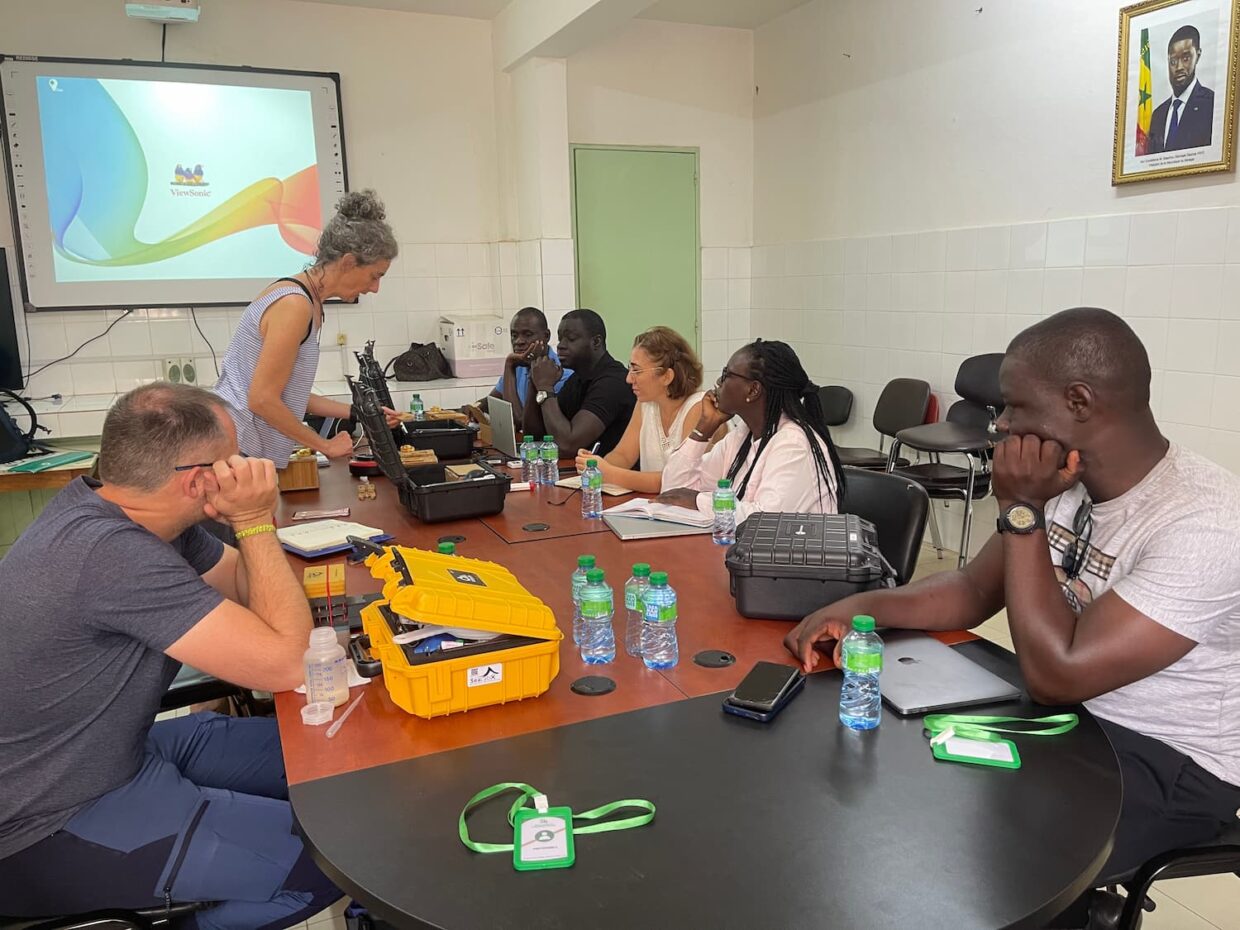
SHARING THE CONTRIBUTION OF PLANKTON AS AN INDICATOR OF OCEAN HEALTH
This local scientific production is a major step towards making the observation of marine ecosystems a comparable and universal science. However, the objective of understanding the ocean remains to respond to the urgency that climate disruption poses for marine biodiversity and human populations. To ensure that the tools developed as part of the Plankt’Eco project help us to better understand and adapt to these changes, local partners are working with us to promote these indicators to political decision-makers. In Chile, the Ministry of the Environment and the Government of the Magellan Province in Patagonia are closely monitoring the development of the KOPAs tool, with a view to integrating it into their range of water planning and management tools. In West Africa, the project is supported by the Partenariat Régional Côtier et Marin (PRCM), a coalition of players involved in ocean conservation throughout the sub-region, and by BACoMab, a sustainable financing fund for safeguarding marine and coastal biodiversity in Mauritania. These local relays are essential if science and knowledge of the Ocean are to feed political decision-makers and help ensure the proper conservation of marine biodiversity.
Plankton, a decision-making tool for conservation actions
The Plankt’Eco project contributes to the efforts that the Tara Océan Foundation and all its partners have been making for several years to make plankton observation more widespread. At a time when pressure on the ocean is multiplying, there is an urgent need for monitoring indicators based on an in-depth understanding of marine ecosystems. Plankton, the basis of life in the ocean, offers us the opportunity to prioritize areas and methods of action, and to measure their effectiveness.
To do this, we need to ensure that as many people as possible have access to a proper understanding of this planktonic biodiversity and its functions. While the relevance of a tool or a decision depends heavily on the robustness of the scientific knowledge on which it is based, local ownership of the issue remains the essential factor.
